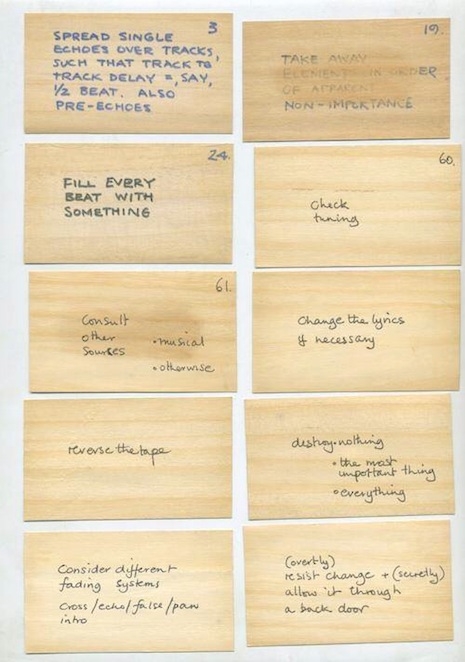

It’s somewhere on the cusp of those two.Deep Cover is a show about people who lead double lives.

As Eno himself has said: “The interesting place is not chaos, and it’s not total coherence. He and Brian would get off on talking about music in terms of history and I’d think, ‘Well that’s stupid-history isn’t going to give you a hook for the song!’ I’m interested in what’s commercial, what’s funky and what’s going to make people dance!” It may well have been the creative tension between that kind of traditionalist approach and Eno’s experimentalism that was more productive than the “planned accidents” themselves. David and Brian were two intellectual guys and they had a very different camaraderie, a heavier conversation, a Europeanness. I finally had to say, ‘This is bullshit, this sucks, this sounds stupid.’ I totally, totally resisted it. He says: ‘Here’s the beat, and when I point to a chord, you play the chord.’ So we get a random picking of chords. Here comes Brian Eno and he goes to a blackboard. I’ve studied music theory, I’ve studied counterpoint and I’m used to working with musicians who can read music. Anyone involved in the creative arts knows that chance events in the process play an important role, but to my mind there’s something slightly self-defeating about the idea of “planned accidents.” Oblique Strategies certainly created tensions, as Carlos Alomar explained to Bowie biographer David Buckley: “Brian Eno had come in with all these cards that he had made and they were supposed to eliminate a block. A cerebral theoretician like Eno had more need of a mental circuit-breaker than someone like Bowie, who was a natural improviser, collagiste, artistic gadfly. Did the Oblique Strategy cards actually work? They were probably more important symbolically than practically. The stress is on capitalising on error as a way of drawing in randomness, tricking yourself into an interesting situation, and crucially leaving room for the thing that can’t be explained-an element that every work of art needs. And several veer towards the Freudian (“Your mistake was a hidden intention” “Emphasise the flaws”). Some use Wildean substitution (“Don’t be afraid of things because they’re easy to do”).

Some cards contradict each other (“Remove specifics and convert to ambiguities” “Remove ambiguities and convert to specifics”). The commands went from the sweetly banal (“Do the washing up”) to the more technical (“Feedback recordings into an acoustic situation” “The tape is now the music”). When you got into a creative impasse, you were to turn up one of the cards and act upon it. It was a deck of cards, and each card was inscribed with a command or an observation. “One of the methods that he and Bowie used on Low was the “Oblique Strategies” he’d created with artist Peter Schmidt the year before.


 0 kommentar(er)
0 kommentar(er)
